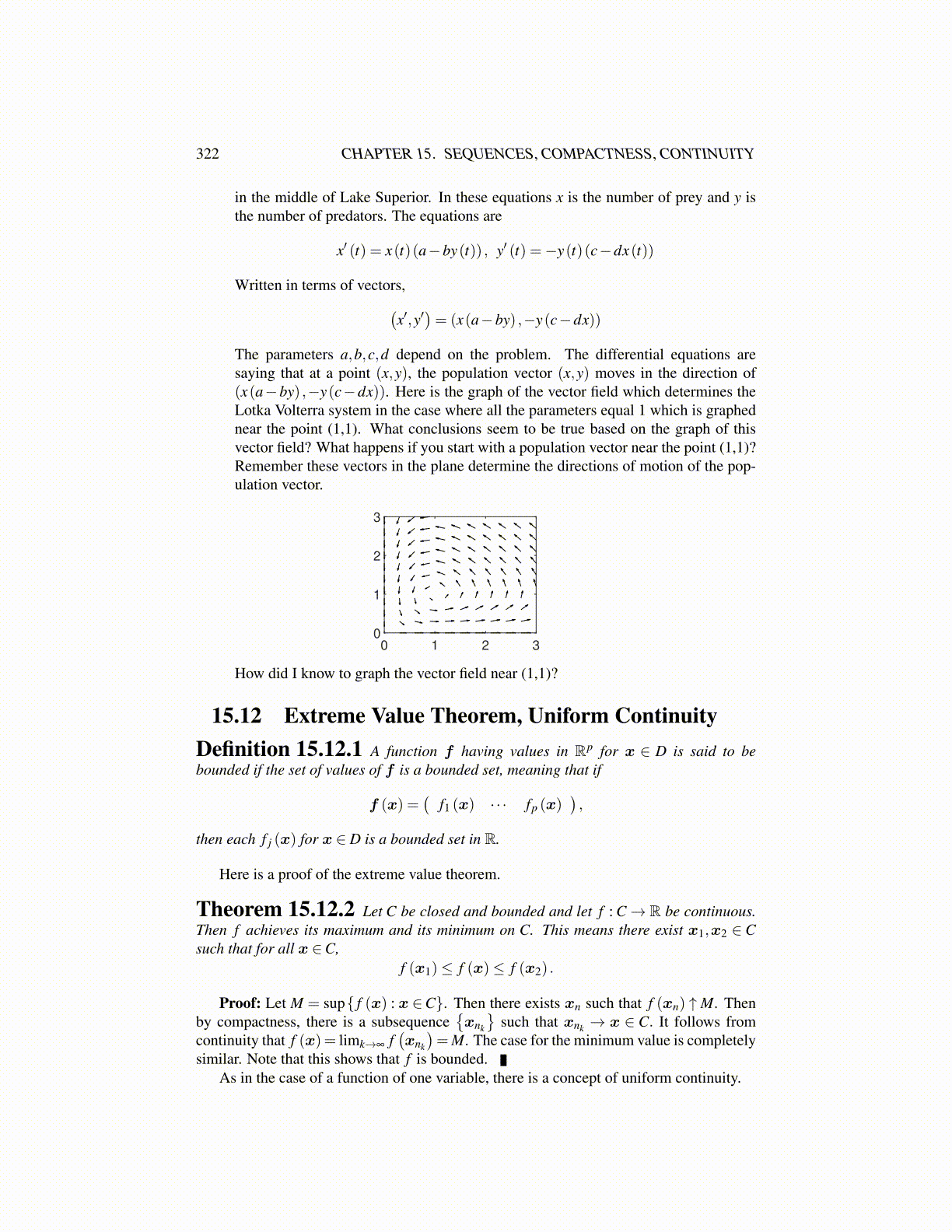
322 CHAPTER 15. SEQUENCES, COMPACTNESS, CONTINUITY
in the middle of Lake Superior. In these equations x is the number of prey and y isthe number of predators. The equations are
x′ (t) = x(t)(a−by(t)) , y′ (t) =−y(t)(c−dx(t))
Written in terms of vectors,(x′,y′
)= (x(a−by) ,−y(c−dx))
The parameters a,b,c,d depend on the problem. The differential equations aresaying that at a point (x,y), the population vector (x,y) moves in the direction of(x(a−by) ,−y(c−dx)). Here is the graph of the vector field which determines theLotka Volterra system in the case where all the parameters equal 1 which is graphednear the point (1,1). What conclusions seem to be true based on the graph of thisvector field? What happens if you start with a population vector near the point (1,1)?Remember these vectors in the plane determine the directions of motion of the pop-ulation vector.
0 1 2 30
1
2
3
How did I know to graph the vector field near (1,1)?
15.12 Extreme Value Theorem, Uniform ContinuityDefinition 15.12.1 A function f having values in Rp for x ∈ D is said to bebounded if the set of values of f is a bounded set, meaning that if
f (x) =(
f1 (x) · · · fp (x)),
then each f j (x) for x ∈ D is a bounded set in R.
Here is a proof of the extreme value theorem.
Theorem 15.12.2 Let C be closed and bounded and let f : C → R be continuous.Then f achieves its maximum and its minimum on C. This means there exist x1,x2 ∈ Csuch that for all x ∈C,
f (x1)≤ f (x)≤ f (x2) .
Proof: Let M = sup{ f (x) : x ∈C}. Then there exists xn such that f (xn) ↑ M. Thenby compactness, there is a subsequence
{xnk
}such that xnk → x ∈ C. It follows from
continuity that f (x) = limk→∞ f(xnk
)=M. The case for the minimum value is completely
similar. Note that this shows that f is bounded.As in the case of a function of one variable, there is a concept of uniform continuity.